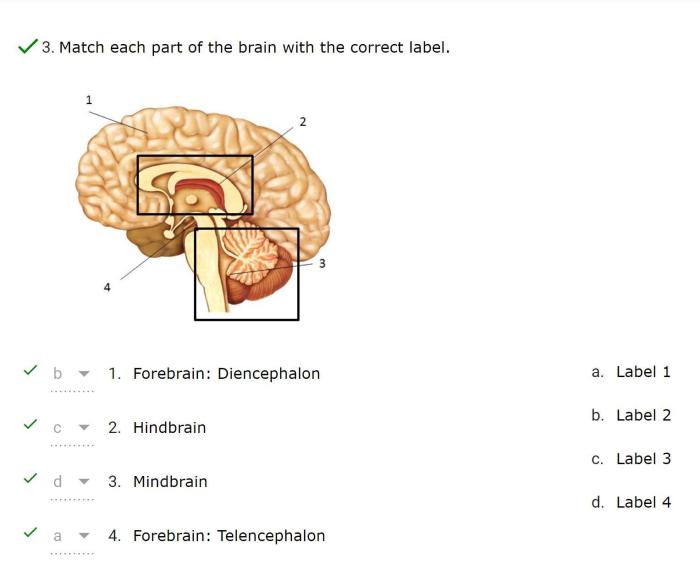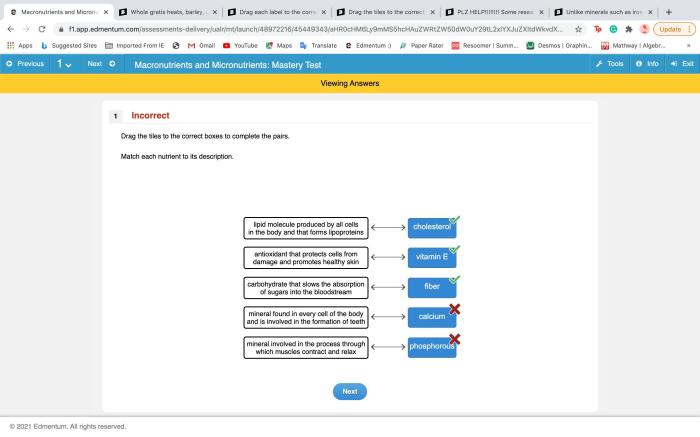Please match each protein to the correct function embarks on a captivating exploration of the fundamental principles and cutting-edge advancements in protein function analysis, unraveling the intricate mechanisms that govern biological systems.
Delving into the depths of this field, we will dissect the significance of understanding protein function, unveil the experimental techniques employed to unravel their mysteries, and delve into the computational approaches that harness the power of artificial intelligence to predict their roles.
1. Protein Function Matching
Matching proteins to their specific functions is crucial for understanding biological systems. It involves identifying the unique role that each protein plays within the cell. By determining protein function, scientists can gain insights into cellular processes, disease mechanisms, and potential therapeutic targets.
Mismatched proteins, where proteins are not performing their intended functions, can lead to cellular dysfunction and disease. For example, mutations in the protein p53, a tumor suppressor, can impair its ability to prevent uncontrolled cell growth, leading to cancer development.
2. Methods for Protein Function Analysis

Experimental techniques used to determine protein function include:
- Protein purification:Isolating specific proteins from a complex mixture.
- Protein characterization:Determining physical and chemical properties, such as size, shape, and charge.
- Functional assays:Testing the activity of proteins in vitro or in vivo.
Each method has advantages and limitations, and the choice of technique depends on the specific protein being studied.
3. Computational Approaches for Protein Function Prediction

Computational algorithms and databases are used to predict protein function based on their sequence and structure. Machine learning and artificial intelligence play a significant role in this field.
While computational predictions provide valuable insights, they are not as reliable as experimental methods and should be interpreted with caution.
4. Case Studies of Protein Function Analysis

Case studies of specific proteins illustrate the challenges and breakthroughs in protein function analysis. For example, the discovery of the function of the CRISPR-Cas9 system in bacteria has revolutionized genome editing.
5. Future Directions in Protein Function Analysis

Emerging technologies and advancements in protein function analysis include:
- Cryo-electron microscopy:Determining protein structures at near-atomic resolution.
- Proteomics:Large-scale analysis of proteins in a cell or organism.
- Single-cell sequencing:Studying protein expression and function at the individual cell level.
These advancements hold promise for advancing our understanding of biological systems and developing novel therapeutic strategies.
FAQ Resource: Please Match Each Protein To The Correct Function
What is the significance of understanding protein function?
Understanding protein function is crucial as it provides insights into the molecular mechanisms underlying biological processes, aids in disease diagnosis and treatment, and facilitates the development of novel therapies and biotechnologies.
How do experimental techniques contribute to protein function analysis?
Experimental techniques, such as protein purification, characterization, and functional assays, allow researchers to isolate, identify, and characterize proteins, determining their biochemical properties and interactions.
What role does computational biology play in protein function prediction?
Computational biology utilizes algorithms and databases to analyze protein sequences, structures, and interactions, enabling the prediction of protein function based on sequence homology, structural similarity, and functional annotations.